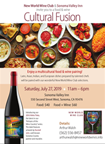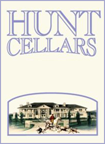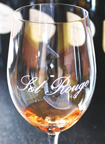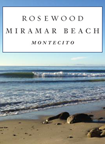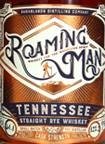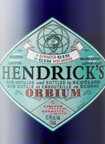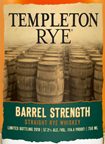The
Vocabulary of Wine Tasting
By FBWorld Team
Do
tasting notes help or hinder your experience with wine tasting?
Take the journey with us, as renowned wine writer Dan Berger
breaks down the words you read (or hear) when wine is described.
This will be an ongoing educational journey for you, our readers
and wine drinkers, to help understand the wine drinking experience
we find at hand.......................
A
picture is worth a thousand words. But even that cannot do justice
to a picture.

And
a sip of wine is worth at least a thousand words, and clearly
that cannot do justice to the wine.
But
words are really all we have before we pull the cork or remove
the screwcap, so we are left with the obviously inexact strategy
called the wine tasting note. It is the refuge of all wine columnists,
and it is so vague in specifics that it is almost worthless.
So
why do we do it? Because it's the only thing we have to try
to explain something about the wine that will help consumers
make a purchasing decision.
The
fact that tasting notes are usually so vague and imprecise does
not detract from the fact that people are using them all the
time to encourage buyers to buy a particular wine, with the
main feature often focusing around hyperbole.
I
have heard famous wine writers refer to a wine as explosive.
Of course, as you can well imagine, nothing actually explodes.
I have also heard wines referred to as hedonistic. Indeed I
have seen that term used for decades. I have professionally
analyzed it. I know more about words that I do about hyperbole,
and I can honestly say that referring to a wine as hedonistic
is completely meaningless.
What
I like may be what you detest and vice versa.
The
basics of tasting notes is simply that there are several specific
categories we may refer to, some or all of which may become
a part of a description of a wine. Here they are in no particular
order of importance.
Color:
This is merely a description of what you see when you pour a
few ounces into a clear glass. With a white wine, we usually
expect it to be clear, slightly yellow in color, perhaps with
green highlights. If the wine is cloudy, that could be a problem.
But not always.
Winemakers
usually attempt to make a wine that is absolutely free of any
cloudiness, but in a couple of instances, I know of wines that
are usually slightly less clear then they could be. In both
cases, the winemakers made a decision not to clarify these wines
because doing so robbed them of crucial elements relating to
aroma and taste.
The
color of a red wine once was always red (duh), in varying shades,
but in the last several years, red wines that are black are
so commonplace that is not even possible to find any red cast.
Is this a flaw? Some would say so. But the ensuing commentary
would be so complicated the only person interested in the subject
would be the person who wrote it.
Aroma:
It has been said that how a wine smells accounts for two thirds
of its character. This may be true for the ultra sophisticates
among us, but for the vast majority of Americans, the importance
of the taste is crucial.
Still, I cannot over emphasize the importance of aroma. It allows
us to determine much about the grape variety from which the
wine was made. It gives us the basic attributes of the wine,
whether or not it is sound or flawed, and can be either alluring
or challenging - or both.
One
thing that must be said about aroma tasting notes: when we refer
to a wine showing cherries, it is only a vague reference that
sets it apart from the strawberries. And strawberries sets the
wine apart from one smelling more of raspberries.
Neither
aroma is better than the other. It is merely descriptive, and
only has meaning to differentiate it from the other similar
aromatics, such as blueberry, loganberry, and blackberry. Just
as it is: a lime or a lemon are not exactly the same things.
Taste:
Of course the taste is why we drink wine in the first place,
but here we have several different aspects as to the constituents
of wine. First of all, does the taste conform to what we smelled
in its aroma? If the aroma and taste differ radically from one
another, we now know that this is a very odd wine indeed! We
also have validation from that first sip whether we will like
this second and third. (This is not always evident after one
sip!)
Taste
also provide information about other elements that may be at
play here, such as flavor elements akin to fruits, herbs, or
even pickled things! (Balsamic? Sherry? Shoe polish?)
Texture/Structure:
Is the wine bitter? Astringent? Sweet? Hard? Silky? Minerally?
All these elements relate to a wine's texture. Such elements
once were thought to be all part of the taste, but the texture
of a wine is related to numerous aspects of its manufacture,
not least of which is the alcohol content, the acidity, the
pH, and about a dozen other constituents.
Finish:
The aftertaste of a wine can be long or short; it can be pleasurable
or tactile-y odd. Is it sweet? If so, will it work with food?
If so, what sort of food? Thai? Curry?
The
most important of the above terms are aroma and taste, and usually
constitute just about all of what you will see described that
the reviewer perceived. If you see no reference to texture,
this does not mean the texture was unimportant. The more thorough
the reviewer, the more detailed the note will be and probably
will refer to texture.
Color is relatively important. Unless something is grossly amiss,
you may not see any reference to it.
On
the other hand, Pinot Noir should be relatively light in its
red pigmentation, so a pitch-black PN is a sign of something
gone awry. Which may later be described in the same tasting
note.
Keep
in mind that tasting notes are a vague guideline. Instead of
telling you the specific address, it just points you North,
East, West, or South.

By
Dan Berger






